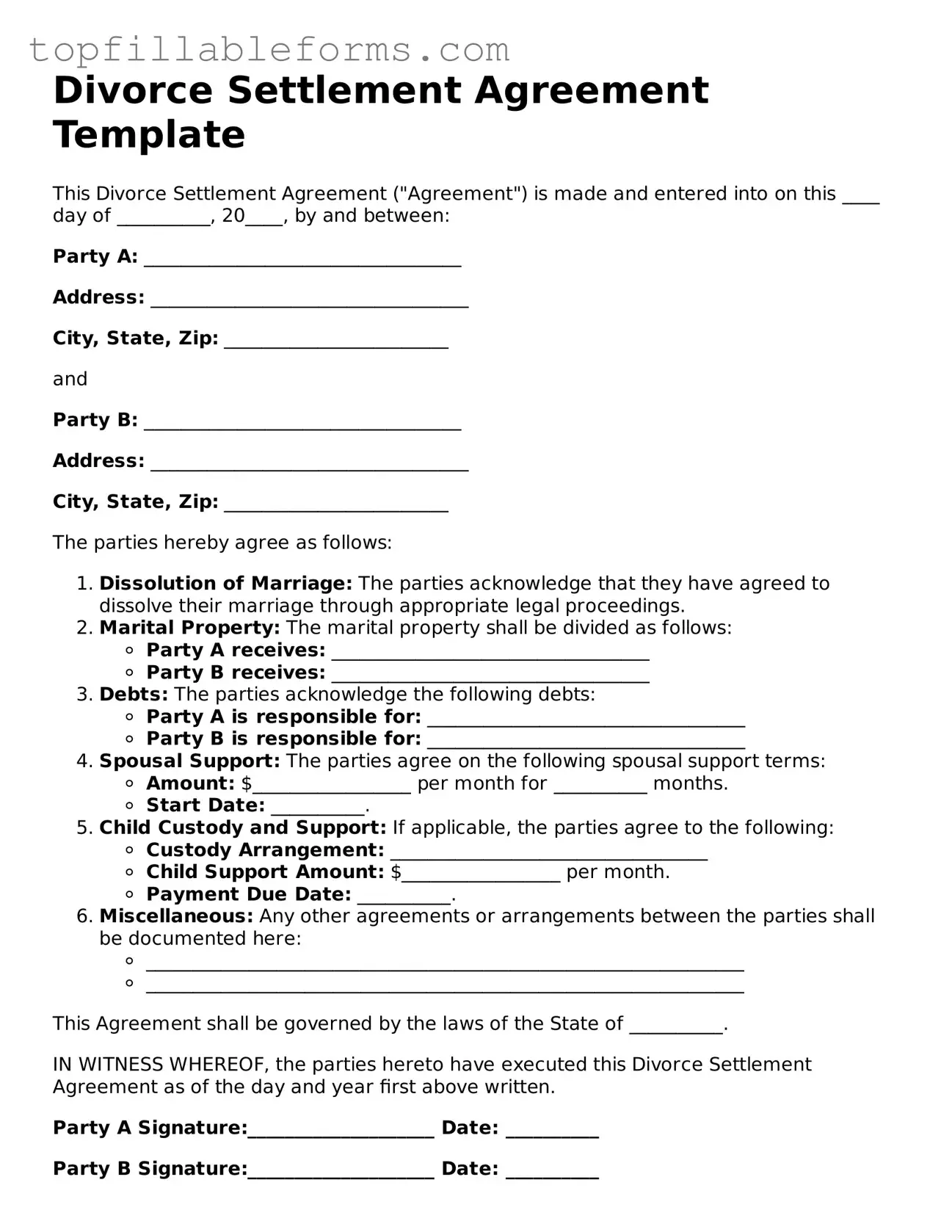Divorce Settlement Agreement Template
This Divorce Settlement Agreement ("Agreement") is made and entered into on this ____ day of __________, 20____, by and between:
Party A: __________________________________
Address: __________________________________
City, State, Zip: ________________________
and
Party B: __________________________________
Address: __________________________________
City, State, Zip: ________________________
The parties hereby agree as follows:
- Dissolution of Marriage: The parties acknowledge that they have agreed to dissolve their marriage through appropriate legal proceedings.
- Marital Property: The marital property shall be divided as follows:
- Party A receives: __________________________________
- Party B receives: __________________________________
- Debts: The parties acknowledge the following debts:
- Party A is responsible for: __________________________________
- Party B is responsible for: __________________________________
- Spousal Support: The parties agree on the following spousal support terms:
- Amount: $_________________ per month for __________ months.
- Start Date: __________.
- Child Custody and Support: If applicable, the parties agree to the following:
- Custody Arrangement: __________________________________
- Child Support Amount: $_________________ per month.
- Payment Due Date: __________.
- Miscellaneous: Any other agreements or arrangements between the parties shall be documented here:
- ________________________________________________________________
- ________________________________________________________________
This Agreement shall be governed by the laws of the State of __________.
IN WITNESS WHEREOF, the parties hereto have executed this Divorce Settlement Agreement as of the day and year first above written.
Party A Signature:____________________ Date: __________
Party B Signature:____________________ Date: __________
Witness Signature:_______________________ Date: __________
